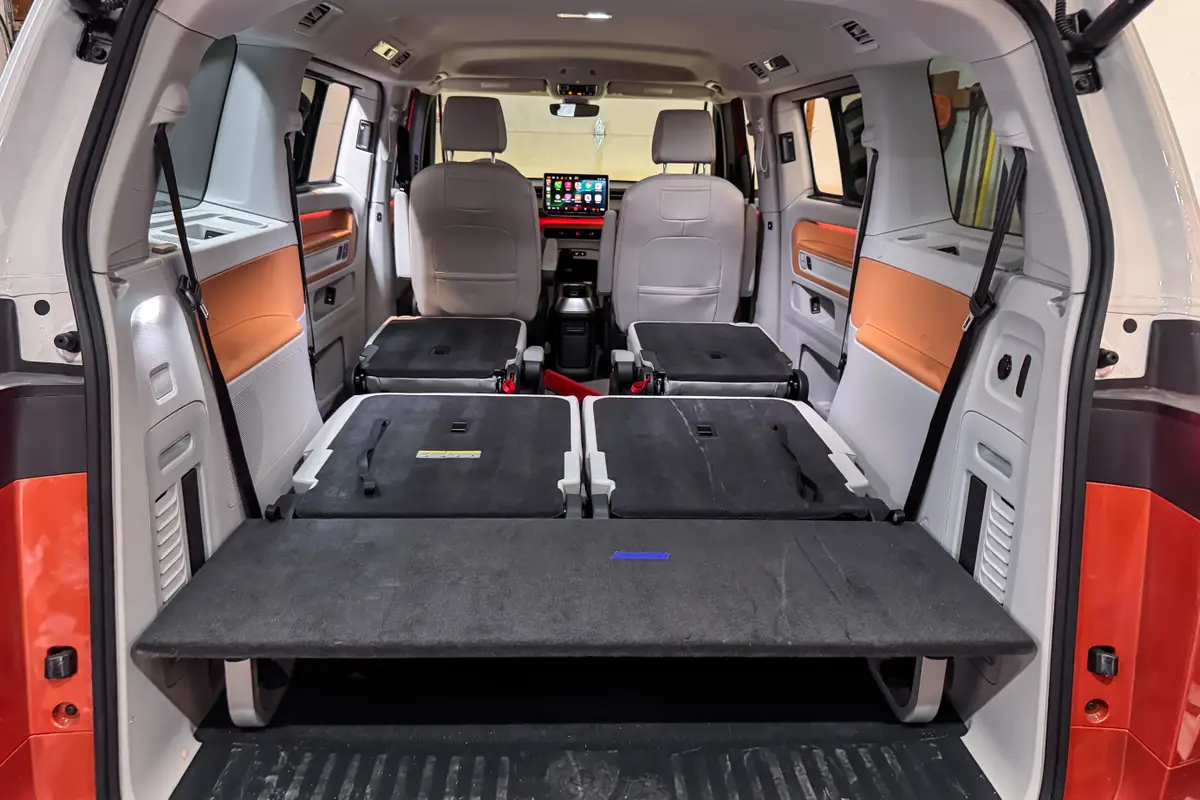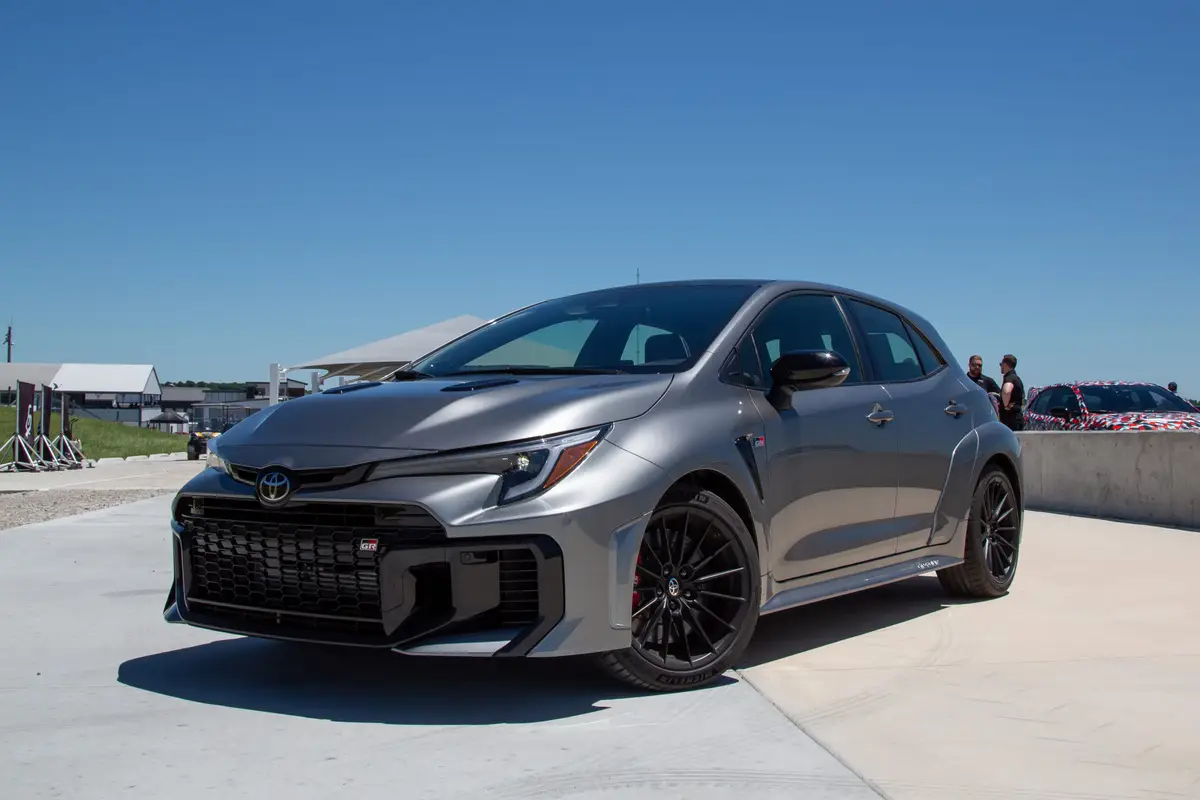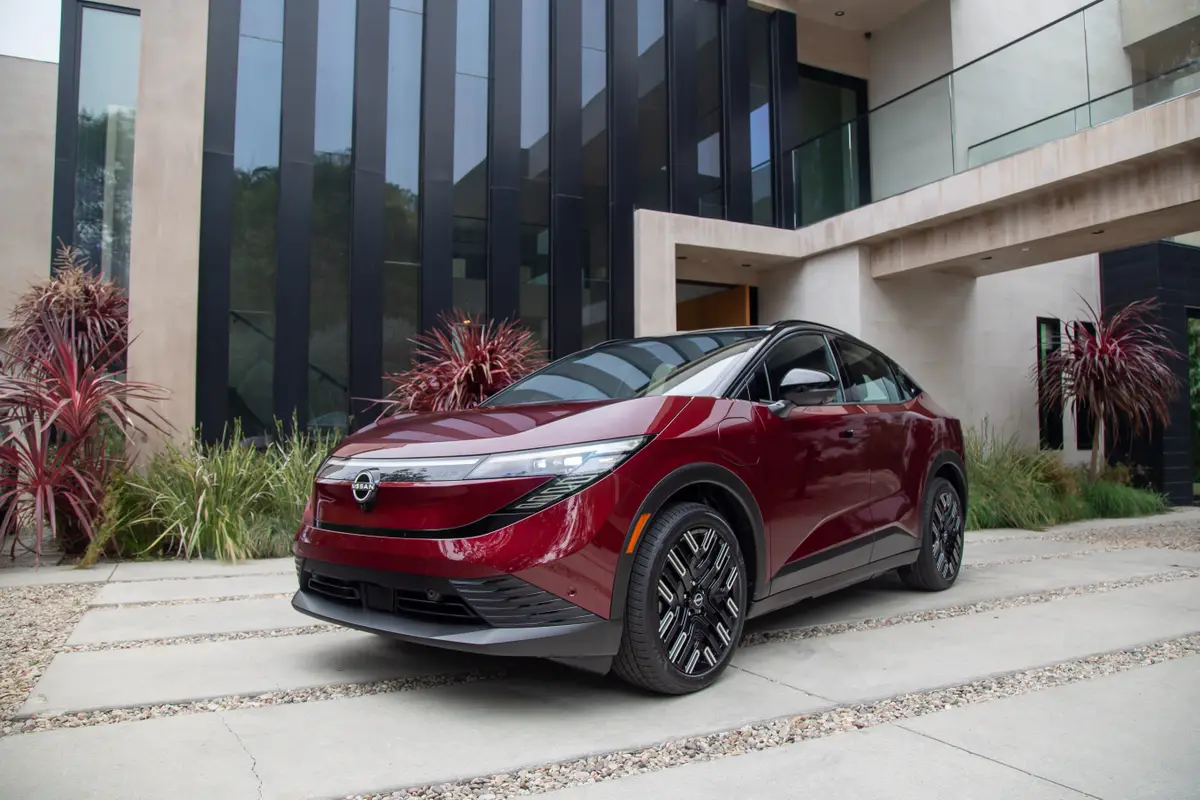A Year After Being Fixed, Does Our 2020 Hyundai Palisade Still Smell?

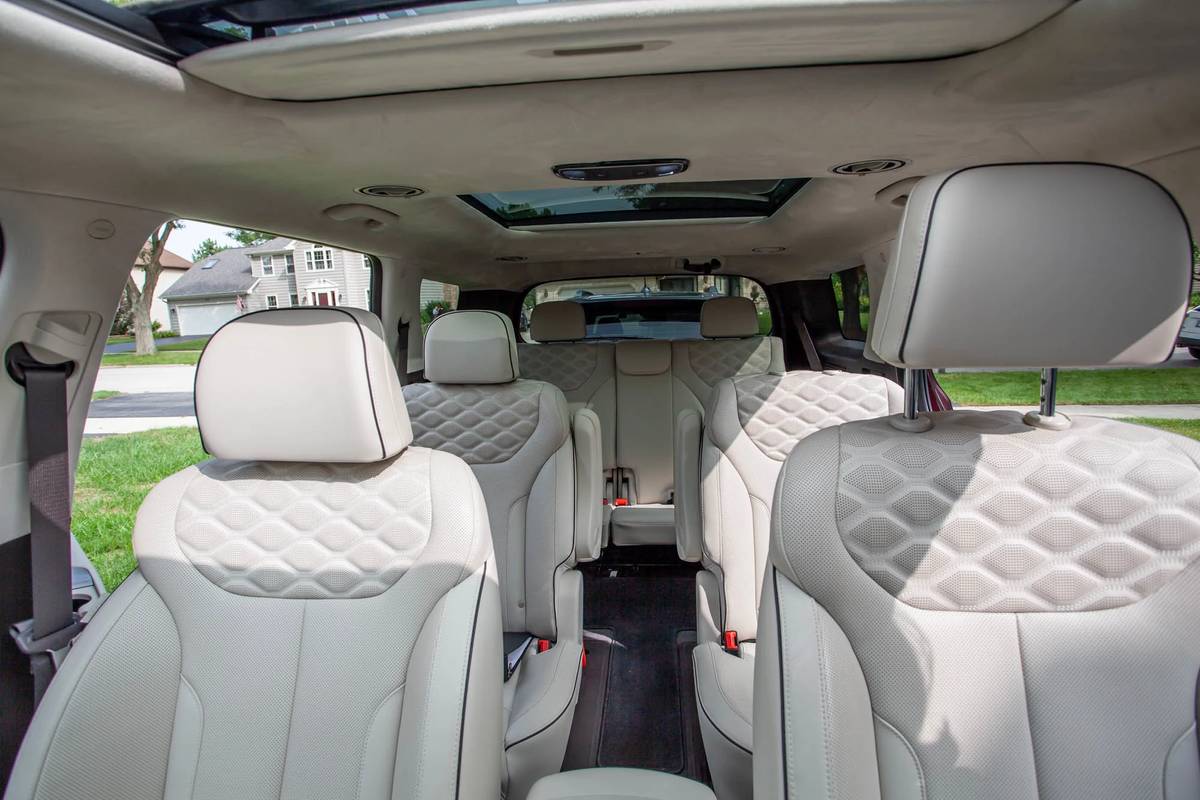
It’s been over a year since Cars.com’s 2020 Hyundai Palisade Limited received a fresh set of head restraints to address one of the strangest — and smelliest — issues we’ve experienced in any of our long-term test cars. A couple months after purchase, our untreated Palisade began emitting a foul odor, likened by staff and other owners to body odor and rotting produce. Throughout 2020, Hyundai investigated the issue with the help of our own Palisade. The automaker eventually blamed a manufacturing process for the imitation-leather head restraints in a small number of Limited and Calligraphy trim levels on the 2020 and 2021 Palisade. (Such trim levels have genuine leather on the primary seating surfaces, but secondary areas use vinyl, a common practice among mass-market cars.) We were evidently unlucky enough to buy a particularly bad example after naming the Palisade our Best of 2020 vehicle.
Our Palisade appeared to be on the up-and-up after the initial fix in November 2020, but a year living with the SUV — and particularly the return of hot weather — unearthed whiffs of the original scent. Not everyone detected the odor even at its worst, and even as I observe its return after the fix, I can report that its intensity has significantly diminished. We’ve communicated with Hyundai’s public relations team throughout this process, and at its recommendation, we scheduled a follow-up with the same local dealership where our Palisade spent six weeks last year.
More About Our Hyundai Palisade Odor:
- CSI: Car Smell Investigation, 2020 Hyundai Palisade Edition
- CSI: Car Smell Investigation, 2020 Hyundai Palisade Edition … No. 2
- 2020 Hyundai Palisade Car Smell Investigation Part 3: Case Closed?
Back at the Dealership
The dealership replaced all seven head restraints, again, to the tune of $2,335 covered by the warranty. That made it the fourth set of head restraints for our Palisade so far. This counts the originals, a set of replacements manufactured the same way and two sets of defect-free head restraints. The technicians also sprayed a deodorizer into the seat cavities through head-restraint mounting holes for at least the second time after also doing so during the Palisade’s first treatment.
During our ownership, the untreated odor varied both with occupant sensitivity and the environment in which the Palisade was parked, escalating during hot and humid days when the car baked in the sun — especially if we left it closed for longer periods. Some thought it was a weird new car smell, while others couldn’t drive the car without opening the windows or airing it out beforehand. After the fix, however, the Palisade’s primary drivers drove it for a year with nary a complaint.
My senses were extra triggered by the untreated smell, and the potency after the fix registered lower on my sniff-o-meter than the untreated smell from last year, about a 3 or 4 on a 10-point scale versus the 10 out of 10 at peak offensiveness. This made the car more drivable, but a sour, sharp smell at a 3-4 intensity is still a sour, sharp smell. Even in cool November temperatures, I found the smell the same, and I observed no perceivable change after the latest set of head restraints and deodorizing.
The Bright Side
But if you ask most of our staff, the car is fixed because of the nature of this whole deal: Individuals perceive scents differently. And that gives us hope that it isn’t an issue for some owners once they receive replacement head restraints. We believe our vehicle’s head restraints are in the clear because we isolated them in a plastic bin to capture their off-gassing, and there’s no offensive smell coming from the updated pieces.
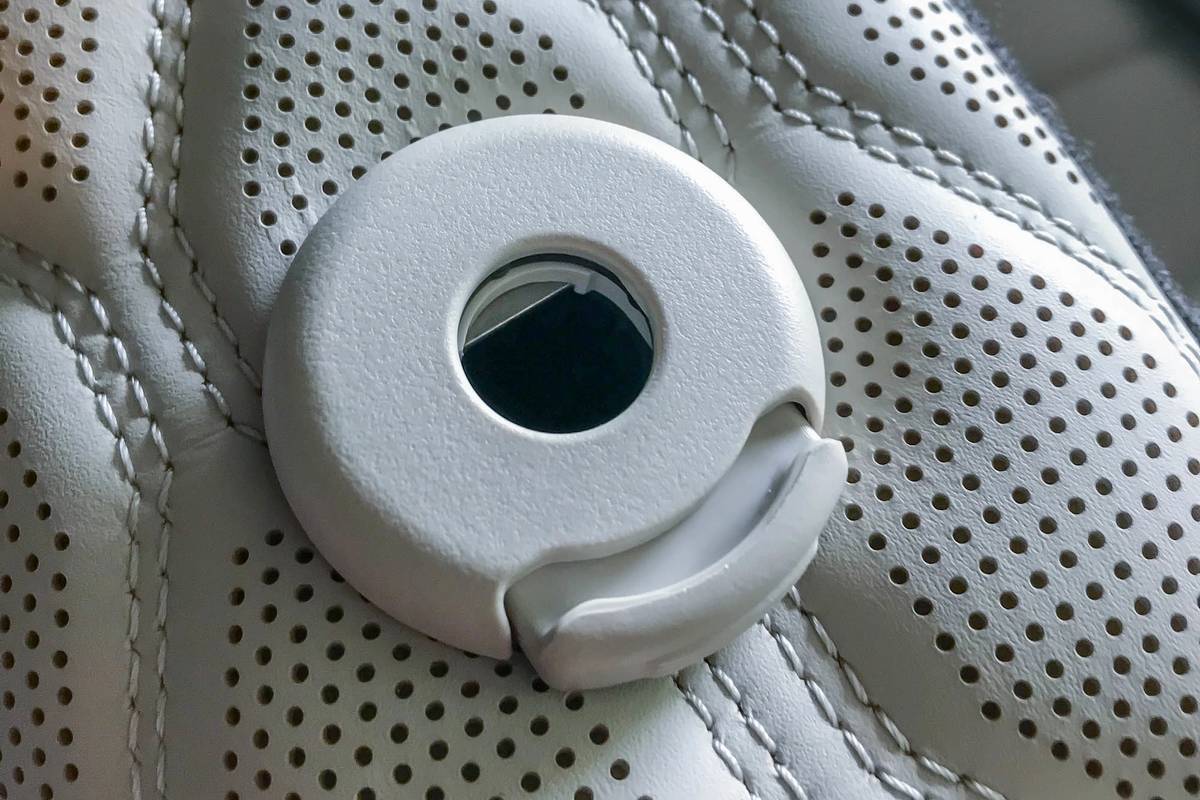
The lingering odor I’m observing could be residual from the original scent that’s impregnated every porous part of the interior, but a faint emission from inside the seats remains observable through the mounting holes for the head restraint, which open up into each backrest cavity. Hence the recommendation in Hyundai’s technical service bulletin to spray deodorizer down there. Hyundai says the imitation leather used elsewhere in the car came from a different supplier with a different manufacturing process than the affected head restraints. We’re left guessing why an odor supposedly coming only from head restraints would work its way inside the backrests in the first place, and why these cavities — and our whole car — still smell long after the offending head restraints have been removed.
What’s Next?
Unfortunately, we’ve reached the end of the fixes identified by Hyundai. Owners still experiencing the smell should first make sure they’ve followed the automaker’s official fixes to the end, including the replacement of the head restraints and not just the treatment of the originals, which did little to nothing for our car. Hyundai may require the treatment as a prerequisite to replacing the head restraints, so make sure you actually have the revised head restraints.
And if you’re still not satisfied, then your options outside of selling the car include a warranty dispute in an attempt to secure an eventual lemon-law buyback. You’ll have to follow the recommendations outlined in your Hyundai’s warranty book, but Hyundai directs these types of disputes to the Better Business Bureau Auto Line, a non-profit third-party program that provides dispute resolution to manufacturers and consumers as an alternative to court. It shouldn’t be mistaken for a consumer watchdog organization.
Lemon-law disputes are among the types of disputes BBB Auto Line supports, according to Juan Herrera, BBB Auto Line’s vice president of dispute-resolution programs, and each state’s lemon laws will establish the eligibility guidelines and remedies available if the vehicle is found defective. According to our Palisade’s warranty book, “You must use BBB Auto Line prior to seeking remedies through a court action pursuant to the Magnuson-Moss Warranty Act (‘the act’), except in Georgia, although that option is still available to you.”
Herrera says 16 states administer lemon-law arbitration programs, which could be an alternative to BBB Auto Line’s services.
“Most of these programs do not impact our dispute resolution services,” Herrera said. “As BBB Auto Line is a non-binding arbitration program, a consumer may come through our process and still proceed to the state’s arbitration program if they desire. However, three of the 16 states require that the consumer choose one program or the other. If the consumer elects to use BBB Auto Line, they could not then use the state’s arbitration program.”
While Herrera says consumers do file claims involving odors, he didn’t disclose if any of those were from the Palisade or if there were any Palisade-specific resolutions.
For us, the Palisade’s unique scent is still detectable to me, most noticeable after the car sits for periods closed up, and it mostly dissipates while driving and running the climate control. While I can now drive the Palisade without gagging, our observations leave little doubt that if you’re super in tune with the scent, then you may have a lingering odor even after doing everything Hyundai recommends. And that stinks.
More From Cars.com:
- CSI: Car Smell Investigation, 2020 Hyundai Palisade Edition
- 2020 Hyundai Palisade Vs. 2020 Toyota Highlander: Family SUVs Duke It Out
- Cars.com’s 2020 Hyundai Palisade: Here’s What Our First Service Visit Cost
- Coronavirus Car Care: We Had to Get Our Hyundai Palisade Fixed During Shelter-in-Place
- Best of 2020 Winner: 2020 Hyundai Palisade
Cars.com’s Editorial department is your source for automotive news and reviews. In line with Cars.com’s long-standing ethics policy, editors and reviewers don’t accept gifts or free trips from automakers. The Editorial department is independent of Cars.com’s advertising, sales and sponsored content departments.

Managing Editor Joe Bruzek’s 22 years of automotive experience doesn’t count the lifelong obsession that started as a kid admiring his dad’s 1964 Chevrolet Corvette — and continues to this day. Joe’s been an automotive journalist with Cars.com for 16 years, writing shopper-focused car reviews, news and research content. As Managing Editor, one of his favorite areas of focus is helping shoppers understand electric cars and how to determine whether going electric is right for them. In his free time, Joe maintains a love-hate relationship with his 1998 Pontiac Firebird Trans Am that he wishes would fix itself. LinkedIn: https://www.linkedin.com/in/joe-bruzek-2699b41b/
Featured stories
